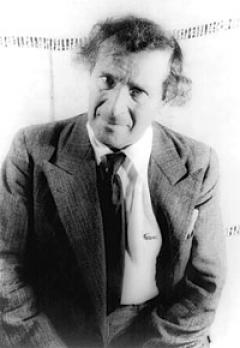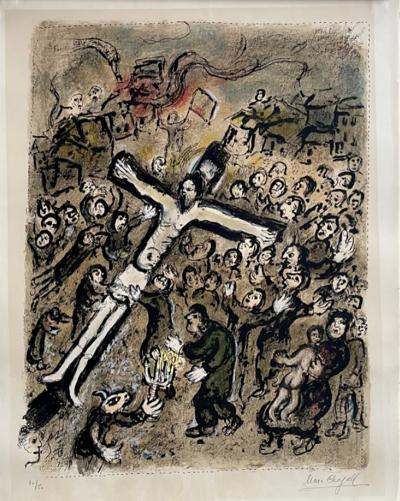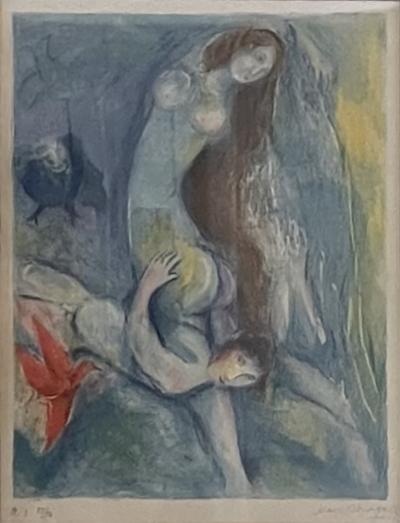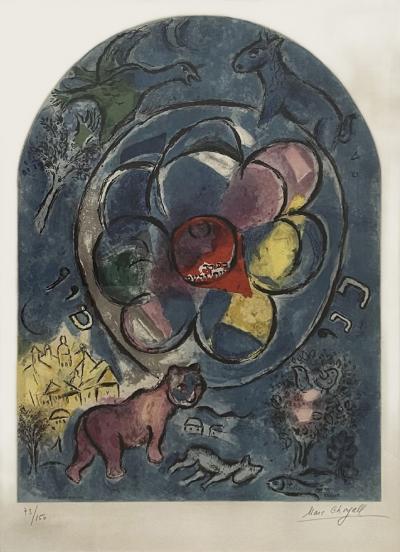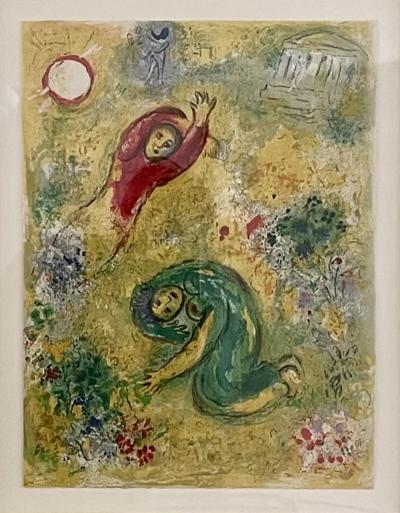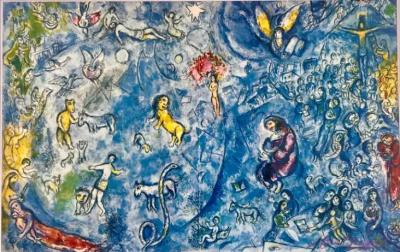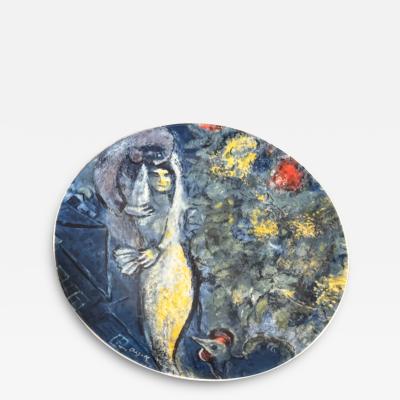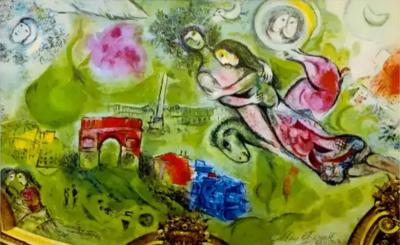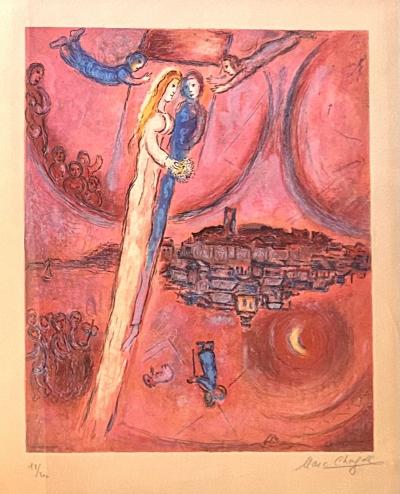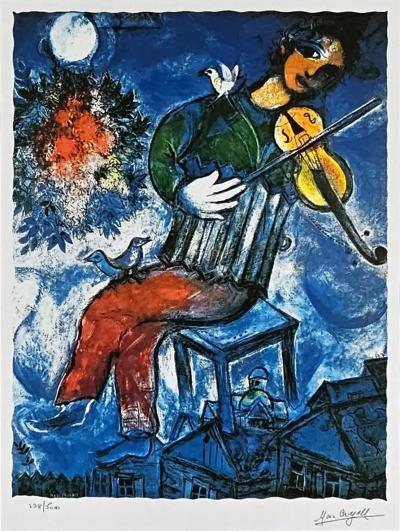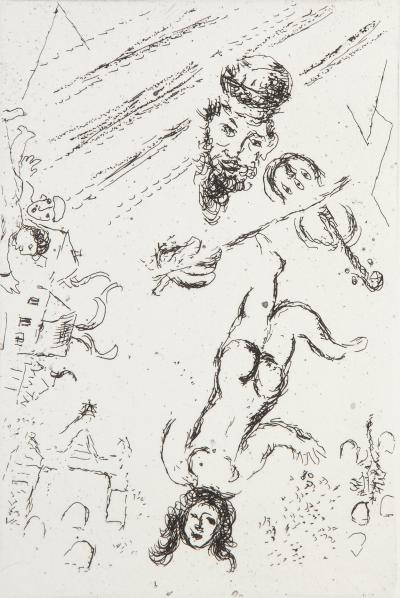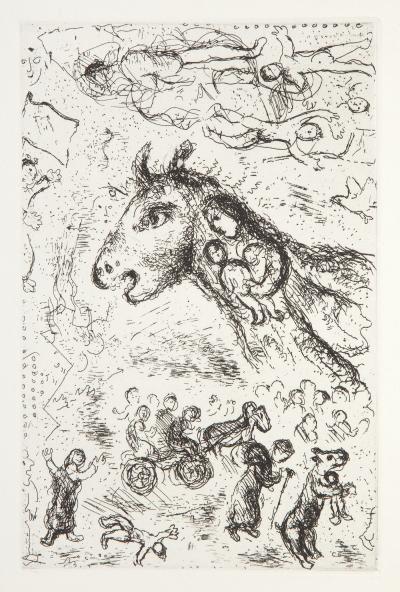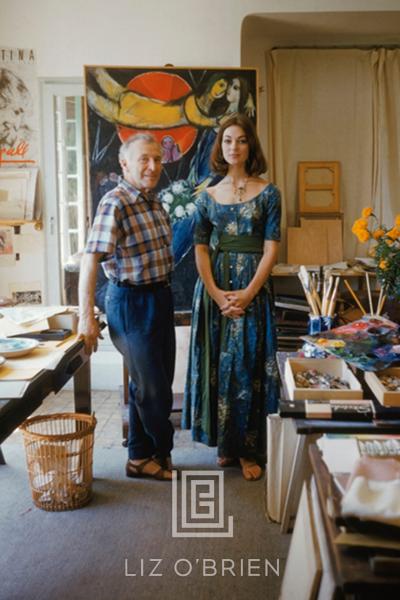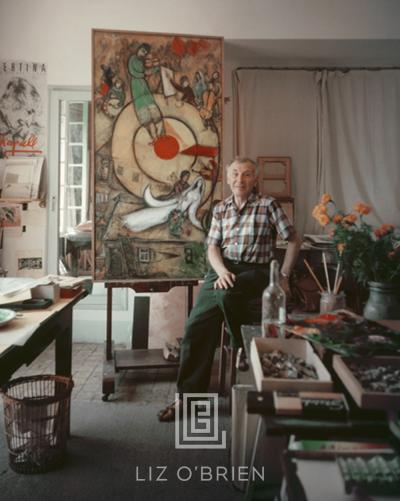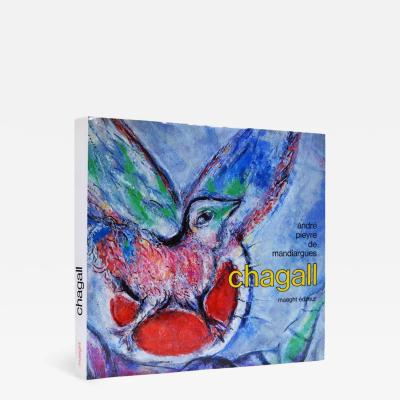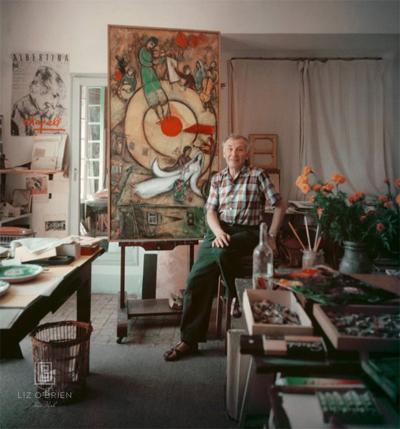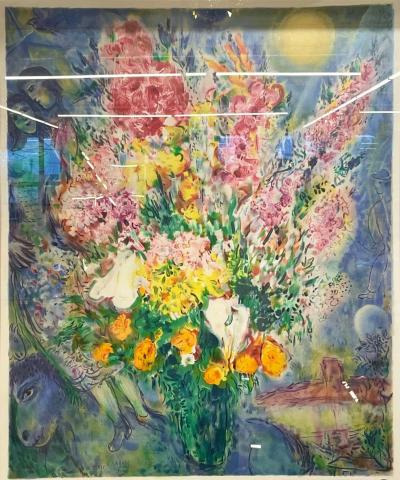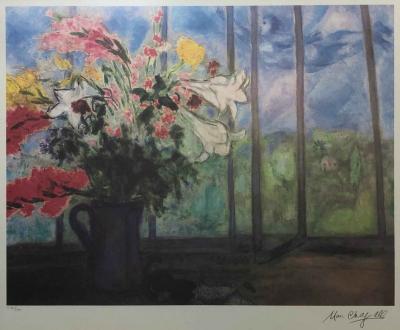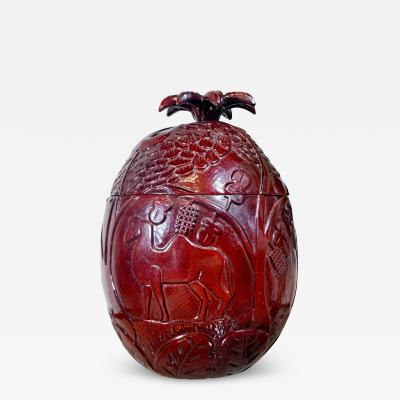Marc Chagall
Russian, 1887 - 1985
Marc Chagall was born in 1887 in Vitebsk, Belarus, where his early education included time at a traditional Jewish school before he transferred to a Russian high school, where he began to explore his artistic talents. After graduating, Chagall moved to St. Petersburg to pursue formal art training. His frequent visits back home led to a fateful encounter in 1910 with Bella Rosenfeld, whom he fell deeply in love with. Their whirlwind romance culminated in an engagement, after which Chagall relocated to Paris to further his artistic studies.
Initially overwhelmed by loneliness in the bustling city, Chagall soon found inspiration in Paris’s vibrant streets, markets, and cultural landmarks. The Eiffel Tower began to appear prominently in his works during this time. After four years, Chagall returned to Belarus to marry Bella, but soon after, the outbreak of war sealed the borders, complicating their lives. This tumultuous period inspired his iconic imagery of a bride and groom floating over Vitebsk.
By 1917, Chagall had gained international acclaim and emerged as a leading figure in modernist art. However, following the Russian Revolution, he faced increasing hardships in Moscow. In 1922, seeking a better life, he applied for an exit visa to return to Paris. During this uncertain time, he also penned his autobiography, My Life. As a Jewish artist rooted in Hassidic traditions, Chagall’s work was deemed “degenerate” by the Nazi Party in Germany.
With the onset of World War II, Chagall and his family found themselves in grave danger, yet he remained unaware of the full extent of the threat until it was nearly too late. Trapped in Nazi-occupied France and unable to secure passage to America, Chagall’s fortunes changed in 1941 when the Museum of Modern Art in New York intervened. They included him on a list of artists whose lives were at risk, and the U.S. government helped smuggle him and his family out of France, along with some of his artworks.
Arriving in New York, Chagall was suddenly thrust into the limelight, becoming a celebrated figure despite his limited English. His first major retrospective at the Museum of Modern Art in 1946 solidified his status, but he yearned for France. In 1947, he returned for an exhibition at the Musée National d’Art Moderne. Chagall lived to be ninety-eight, making him the last surviving master of European Modernism. Throughout his life, he witnessed and endured the upheavals of the Bolshevik Revolution and both World Wars, emerging as a celebrated artist known for his brilliant use of color and distinctive compositions.
Initially overwhelmed by loneliness in the bustling city, Chagall soon found inspiration in Paris’s vibrant streets, markets, and cultural landmarks. The Eiffel Tower began to appear prominently in his works during this time. After four years, Chagall returned to Belarus to marry Bella, but soon after, the outbreak of war sealed the borders, complicating their lives. This tumultuous period inspired his iconic imagery of a bride and groom floating over Vitebsk.
By 1917, Chagall had gained international acclaim and emerged as a leading figure in modernist art. However, following the Russian Revolution, he faced increasing hardships in Moscow. In 1922, seeking a better life, he applied for an exit visa to return to Paris. During this uncertain time, he also penned his autobiography, My Life. As a Jewish artist rooted in Hassidic traditions, Chagall’s work was deemed “degenerate” by the Nazi Party in Germany.
With the onset of World War II, Chagall and his family found themselves in grave danger, yet he remained unaware of the full extent of the threat until it was nearly too late. Trapped in Nazi-occupied France and unable to secure passage to America, Chagall’s fortunes changed in 1941 when the Museum of Modern Art in New York intervened. They included him on a list of artists whose lives were at risk, and the U.S. government helped smuggle him and his family out of France, along with some of his artworks.
Arriving in New York, Chagall was suddenly thrust into the limelight, becoming a celebrated figure despite his limited English. His first major retrospective at the Museum of Modern Art in 1946 solidified his status, but he yearned for France. In 1947, he returned for an exhibition at the Musée National d’Art Moderne. Chagall lived to be ninety-eight, making him the last surviving master of European Modernism. Throughout his life, he witnessed and endured the upheavals of the Bolshevik Revolution and both World Wars, emerging as a celebrated artist known for his brilliant use of color and distinctive compositions.
Marc Chagall
Marc Chagall (1887-1985) Plate 3 From Four Tales of the Arabian Nights, 1948
H 16.93 in W 9.06 in
$ 27,000
Access Trade Price
Marc Chagall
Marc Chagall (1887-1985), Les Fleurs Saccagees (The Trampled Flowers) 1961
H 16.54 in W 12.6 in
$ 6,000
Access Trade Price
Marc Chagall
SUITE OF 12 CHAGALL CERAMIC PLATES BY GEORG JENSEN IN ORIGINAL BOXES
H 1 in DIA 8 in
$ 3,000
Marc Chagall
Marc Chagall Romeo & Juliet Original Lithograph Signed & Framed 1975
H 23 in W 30 in D 1 in
Marc Chagall
Marc Chagall Lithograph Entitled " Carmen" Plate Signed, Numbered & Framed
H 14 in W 22 in D 1 in
Marc Chagall
Marc Chagall Serigraph 'Blue Violinist', Facsimile Signed, Numbered and Framed
H 31 in W 25 in D 1 in
Marc Chagall
FINE COLOR PRINT OF MARC CHAGALL IN SILVER MODERNIST FRAME
H 35 in W 42 in D 2 in
$ 3,800
Modernist Breton Design Ice Bucket in the Style of Marc Chagall, 1950’s
H 10.24 in W 8.27 in D 8.27 in
$ 1,700
